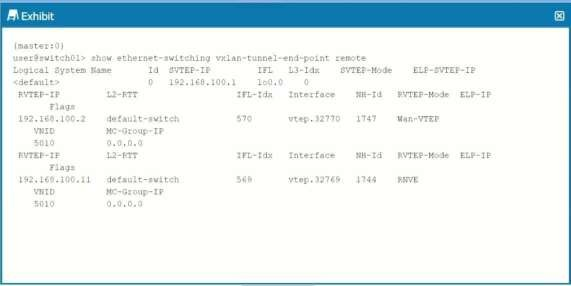At ValidExamDumps, we consistently monitor updates to the Juniper JN0-682 exam questions by Juniper. Whenever our team identifies changes in the exam questions,exam objectives, exam focus areas or in exam requirements, We immediately update our exam questions for both PDF and online practice exams. This commitment ensures our customers always have access to the most current and accurate questions. By preparing with these actual questions, our customers can successfully pass the Juniper Data Center, Professional exam on their first attempt without needing additional materials or study guides.
Other certification materials providers often include outdated or removed questions by Juniper in their Juniper JN0-682 exam. These outdated questions lead to customers failing their Juniper Data Center, Professional exam. In contrast, we ensure our questions bank includes only precise and up-to-date questions, guaranteeing their presence in your actual exam. Our main priority is your success in the Juniper JN0-682 exam, not profiting from selling obsolete exam questions in PDF or Online Practice Test.
Referring to the exhibit, which two statements are correct? (Choose two.)

You are designing an IP fabric underlay network in your data center. You must ensure that your traffic can be forwarded at line rate.
In this scenario, which oversubscription model should be used?
You are asked to implement VXLAN in your data center network. You must choose between
implementing EVPN signaling and multicast signaling. Which two statements are correct in this scenario? (Choose two.)
A) EVPN signaling reduces ARP flooding, while multicast signaling does not. EVPN uses BGP to distribute MAC address information, which can also include IP address bindings, thereby eliminating the need for ARP flooding across the VXLAN overlay. B. EVPN signaling propagates MAC addresses across the network, while multicast signaling does not. In an EVPN environment, MAC address advertisements are distributed via BGP EVPN routes, enabling efficient and scalable MAC address learning and distribution.
EVPN Overview
You have successfully deployed an IP fabric in your data center. However, your server team complains that they are not seeing an increase in performance as expected. After examining the routing and forwarding tables, you notice that only a single route is listed to each destination in the forwarding table, even though there are multiple routes shown in the routing table.
In this scenario, what should you do to solve the problem?
Which two statements define the use of route targets and route distinguishers in an EVPN? (Choose two.)
A) Route distinguishers (RDs) ensure that routes from different clients remain unique within the data center domain by appending a unique identifier to each route, allowing overlapping IP spaces to coexist in the same network.
C) Route targets (RTs) identify the VRF into which the route should be placed. They are used in the import and export policies to control the distribution of routes among different VRFs, ensuring that routes are only shared with the intended VRFs.